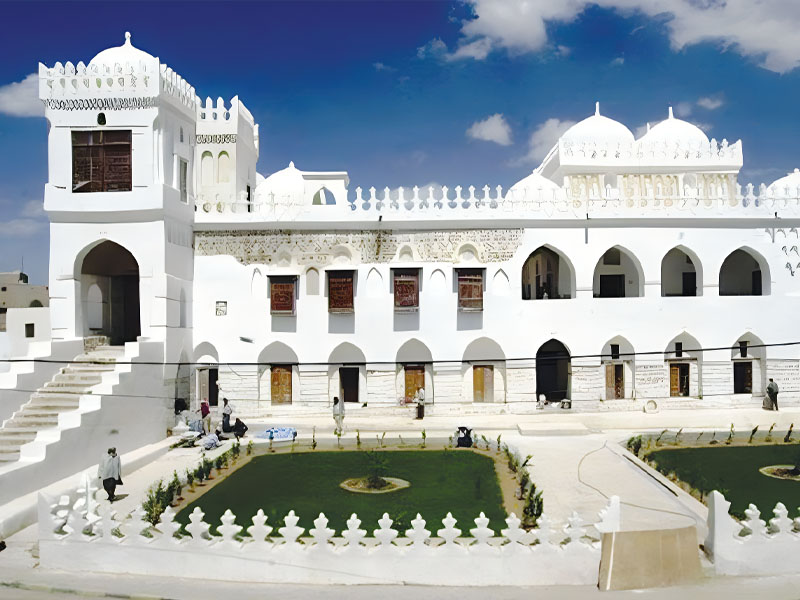Dictionary of Islamic architecture and ornament
Issue 34

By Muhammad Muhammad Ibrahim, Yemen
The researcher traces the meanings and implications of Islamic architecture, ornaments and miniatures. He also studies their diversity, uniqueness and openness to the Other by examining the geometric and architectural aspects of Amiriya School and Mosque in Rada’a. The capital of Yemen’s most powerful Islamic mini-state, (Tahiriya State), Rada’a was known for science and architecture.
Open to both Eastern and Western cultures, Tahiriya had a very cultural and intellectual society. The last king of Tahiriya State, Al Dhahir Sultan Amir bin Abdul Wahab made the city of Rada’a his capital; he was known for good administration and political wisdom.
Two overlapping methodologies were used to study Amiriya. The first is observational, focusing on the architectural details. The second theoretical approach studies architecture by taking into account scientific and Islamic urban development in Yemen at the time of the Tahiriya State.
Dr. Selma Al-Radi, the project director and winner of the Aga Khan Award 2007, published a book about the Amiriya School in which she describes her love for Yemeni architecture. The story begins with her first visit to Amiriya School and Mosque; she lived in Yemen for 24 years.
She dedicated her book, which Oxford University published in English in 1997, to Yemeni builder Izzi Muhammad, a builder who had in his hands and head the experience of many generations. She expressed her gratitude to the master builder (Uasta) for teaching her. Regrettably, he died before she could become an Uasta.
In her book, she describes the technical details of the Amiriya restoration project, which took 23 years.
A former President of the Republic of Yemen, Ali Abdullah Saleh gave Al-Radi an award in recognition of her contribution to the culture and history of Yemen and her outstanding efforts in restoring this historic Islamic monument.







































































